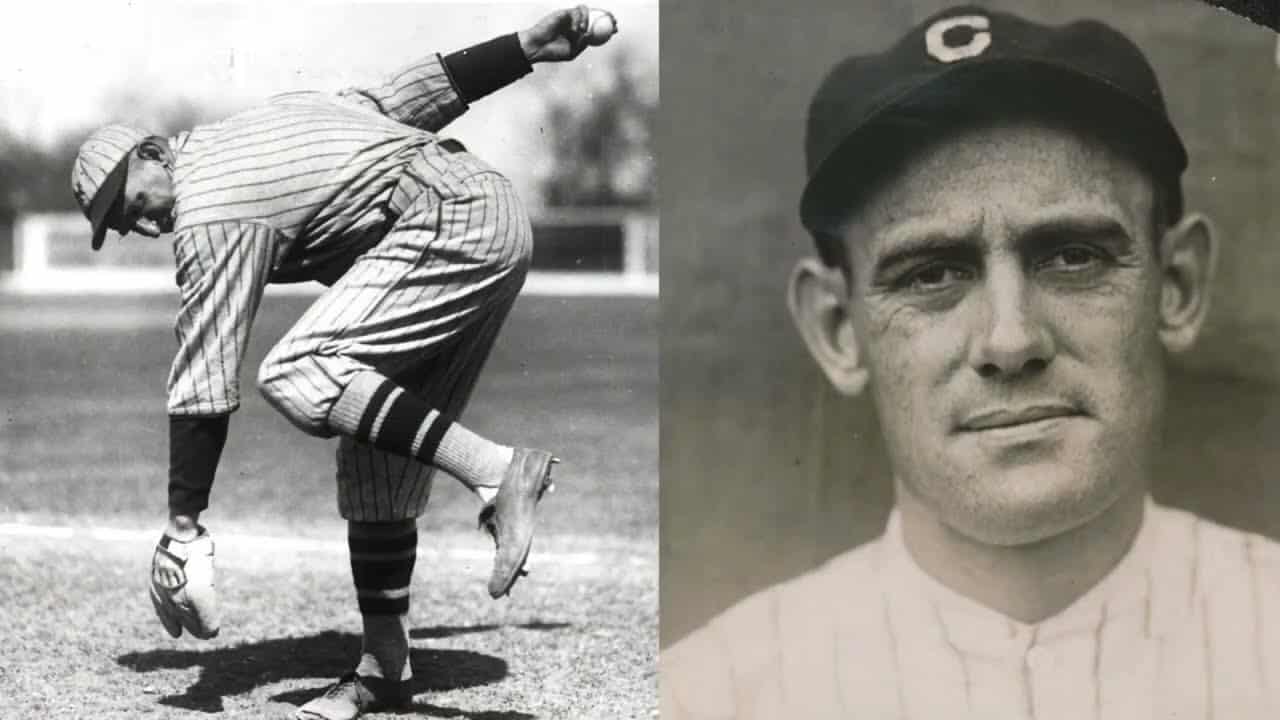Last Updated: March 1st, 2024 by Jake Cain
In the annals of baseball history, few moments are as chilling and consequential as the tragedy that unfolded on August 16, 1920, at the Polo Grounds in New York. Presented by The Baseball Professor, a recent video delves into the fateful pitch from submariner Carl Mays that led to the untimely death of Cleveland Indians’ beloved shortstop Ray Chapman and irrevocably altered the trajectory of Major League Baseball.
Carl Mays, a pitcher whose aggressive inside pitching and unapproachable demeanor set him apart, delivered a fastball on that overcast day that struck Chapman with such force that it echoed throughout the stadium. Chapman, as the video and a contemporaneous report from The New York Times confirm, was a respected player, known for his base-stealing prowess and affable personality—an antithesis to Mays in both style and temperament.
The impact was fatal, marking the only time in MLB history that a pitch has directly resulted in a player’s death.
The Aftermath and the Evolution of the Game
The pitch not only claimed Chapman’s life but sparked a media frenzy and calls for Mays to be banished from the sport. The incident underlined the danger of the dirty, misshapen baseballs of the era, which had often been manipulated by pitchers’ deliberate soiling and doctoring.

Umpires, in a swift policy shift, were instructed to ensure only new, clean baseballs were used—a stark contrast to the previously tolerated practice.
This dreadful event prompted significant changes within the game. One pivotal alteration was the prohibition of pitchers from modifying the ball with foreign substances—spitballs were decisively outlawed. Following the tragedy, the composition and presentation of the baseball itself were transformed to enhance visibility and safety, laying the groundwork for a new, more offense-driven era.
The subsequent seasons saw an explosive increase in home runs, perhaps best embodied by Babe Ruth’s awe-inspiring 59 home runs in 1921, a testament to the sudden shift in offensive capability post-Chapman. The alteration in the dynamics of the game contributed to a more engaging experience for fans, ushering in an epoch that would come to be known as the “live-ball era.”
Legacy of a Tragedy and Baseball’s Protective Measures
While Chapman’s death did not immediately lead to the introduction of batting helmets—they would not be mandated until the 1970s—it underscored the risks faced by batters and certainly influenced the eventual requirement of protective headgear. The New York Times article poignantly recounts the sorrow of Chapman’s passing, detailing how his teammates and the broader baseball community grappled with the tragedy.
In remembering Chapman, we reflect on a time when baseball was a starkly different game—a game in which safety equipment was primitive and the rules of play were less formalized. The sobering legacy of his death and Mays’ fateful pitch is felt not only in the protective measures now standard in the sport but also in the enduring spirit of reform that seeks to balance the inherent risks of athletic competition with the well-being of the players.
The shadow cast by Chapman’s death serves as a constant reminder of the human element that lies at the very core of America’s pastime. His story, though marred by tragedy, also catalyzed the evolution of baseball into a safer, more thrilling spectacle, ensuring his legacy extends far beyond the records and the baseball diamond.

